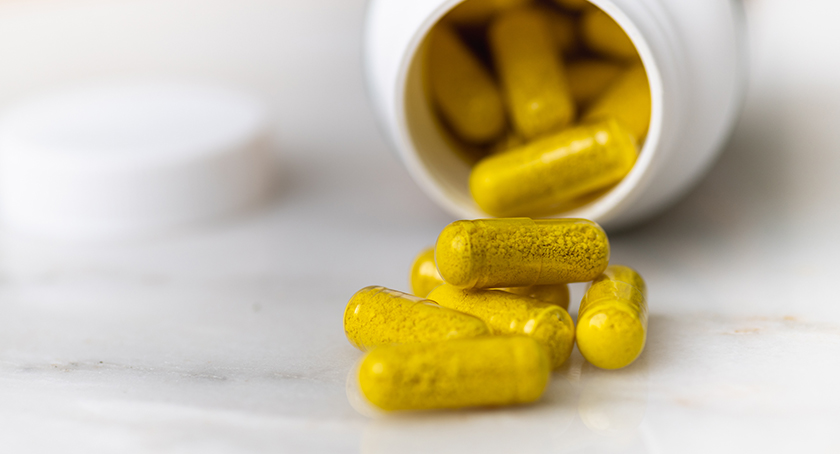Columns
Japan Insider: Diabetes Prevention & Metabolic Syndrome in Japan
Recent health surveys dictate directions for product development and research for diabetes and metabolic syndrome.
By: Ron Bailey

Diabetes Prevention & Metabolic Syndrome in Japan
Recent health surveys dictate directions for product development and research for diabetes and metabolic syndrome.
By Ron Bailey
Since the October 2004 “Japan Insider” column, which covered diabetes, the Japanese seem to have settled on the concept of metabolic syndrome as the appropriate group of metabolic risk factors to monitor for the prevention of diabetes. The five factors defining metabolic syndrome—high triglyceride levels, low HDL cholesterol levels, high fasting blood sugar, above normal blood pressure and an excessive waist size—are already issues of concern in Japan. The metabolic syndrome concept allows the grouping of these factors to be more easily understood by the adult population at risk of diabetes.
Nutrition Survey Update Related to Diabetes Prevention
The Ministry of Health, Labor, and Welfare (MHLW) of Japan has published the most recent results from its annual nutrition surveys. The report, titled “The National Health and Nutrition Survey in Japan 2003,” summarizes data collected in 2003, which has been analyzed by the National Institute of Health and Nutrition of MHLW. Addressing each of the metabolic syndrome risk factors, the findings can be summarized according to the following categories:
Body Mass Index (BMI): This measure of body mass as an indicator of obesity is reported in more detail than in previous surveys, indicating the importance of the data in understanding health-related trends in Japan. Over the past 20 years, BMI for males over 30 years of age has increased dramatically, with over 30% of adult males now considered obese by Japanese standards (“obesity” is defined as a BMI of over 25 in Japan) for all ages between 30 and 70. Younger women are doing better, however, with less than 25% considered obese at least up until age 60 and above where the percentages in-crease to levels approaching those seen in the male population. Interestingly, previous surveys using 2002 data indicated that by U.S. obesity standards (a BMI of greater than 30) only 3% of Japanese adults would be considered obese, suggesting that the Japanese currently face significant weight management/
loss issues.
High-Density Lipoprotein (HDL Cholesterol): The data on HDL levels for both males and females across all age groups are very consistent, with an average HDL of 56 mg/dl for both sexes; over 85% of the people tested had an HDL above the 40 mg/dl target. These are encouraging data, even though the total cholesterol data show relatively high levels (an average of approximately 200 mg/dl) for adults.
Triglycerides: The triglyceride data are much more variable, with average levels hovering around 155 mg/dl for males and 124 mg/dl for females. Over 45% of males aged 40-60 have triglycerides above the 150 mg/dl target, with nearly 40% of females in their 60’s going above this target. These are somewhat surprising data given the fact that consumption of omega 3 oil-rich fish has been shown to reduce triglyceride levels, and the Japanese consumption of oily fish continues to be high when compared with countries such as the U.S.
Blood Sugar: Although the average blood sugar levels for both males and females are well under the recommended 110 mg/dl three hour fasting maximum, 30-40% of both sexes over 60 years of age exceed that level. This is of concern to MHLW, especially since the incidence of diabetes continues to increase in Japan.
Blood Pressure: While the average diastolic blood pressure readings for both males and females are under the recommended 85 mm Hg maximum, the average systolic blood pressure reading for all adult males exceeds the 130 mm Hg level. Blood pressure levels increase for both sexes with age; and both sexes over 70 also have average systolic readings above 140 mm Hg.
From analyzing these results, it is clear that metabolic syndrome risk factors are a very high priority for MHLW. In turn, these priorities will likely play a role in the segment of the Japanese food and bev-erage industry interested in health and wellness.
Foods for Specified Health Use (FOSHU, “Tokuho” in Japanese) Status Report
The Japanese Health Food and Nutrition Food Association (JHNFA) has re-leased the results of its biennial survey of FOSHU retail product sales in Japan. Some of the findings from that survey (as translated in English by Japanscan Food Industry Bulletin) are also important in the effort to help prevent diabetes.
Neutral Fats, Body Fats: This category is generally associated with claims for weight loss. It is dominated by the “Econa” diacylglycerol technology from Kao Corporation, which has been joined more recently by competitors making similar “allowed” claims related to reduction of body fat. The retail market for such FOSHU products is now worth over $750 million, up nearly 40% from only two years ago, and up from essentially zero sales in 1997.
Blood Sugar: This category actually de-clined over the last two years, down 16% to just under $200 million at retail. There have been very few suitable new functional ingredients targeting blood sugar reduction beyond the popular indigestible dextrin dietary fiber source. Several promising new non-FOSHU functional ingredients shown to reduce blood sugar have not yet achieved FOSHU status, however, they may jumpstart the market if and when they are approved.
Blood Pressure: This category has grown by nearly 70% during the past two years to over $125 million at retail. It is dominated by various peptides, many of which are from marine sources.
Cholesterol: This category has also grown significantly, doubling in the past two years alone to sales of just under $200 million. Plant sterols and stanols, as well as soy proteins and various fiber sources, are the major ingredients in this category. So far there is no approved claim for HDL cholesterol specifically, only total cholesterol.
To put it in perspective, total FOSHU market retail sales are now estimated at just under $5.5 billion at current exchange rates. This includes sales from a total of 569 approved products. Gut regulation products continue to dominate the FOSHU market, although market share is declining in terms of both retail sales and numbers of approved products.
Most unofficial sources contacted in Japan seem to agree that it is not likely the MHLW will approve a “Metabolic Syndrome FOSHU Product” targeted at more than one of the risk factors, which define the term. The more conservative approach, which tends to be an MHLW preference, will be to continue to approve products that focus on a single risk factor and a single health claim.
Non-Japanese Research Opportunities
There are already indications that Japanese food and beverage companies are be-ginning to systematically look outside Japan for research partners to study both new functional ingredients, as well as al-ready approved FOSHU ingredients. Clearly, the growing obesity crisis in the U.S. demands that research and development funding be available immediately to address the problem. At the same time, the health and economic impact of the parallel diabetes crisis in both the U.S. and Japan allows researchers to simultaneously consider both obesity and diabetes prevention technologies. For the U.S., which is clearly the global loser when it comes to obesity prevention, it only makes sense that new technologies be applied, if not developed, here first. Japanese companies recognize this need and are therefore interested in working with U.S. research and development laboratories to help solve its growing diabetes problem as well. NW
***
Note: Important sources of information for this article are ”The National Health and Nutrition Survey in Japan, 2003” from MHLW and “The FOSHU Market Size” press release from the Japanese Health Food and Nutrition Food Association.




















